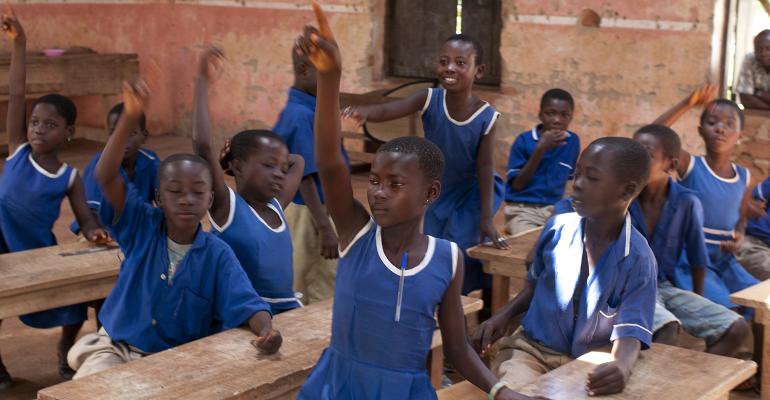By Irene D. Pritzker
It’s not an uncommon scenario: A philanthropist becomes passionate about funding an organization or a program and they rally other donors to the cause. Meetings happen and checks are written, but sometimes the outcome doesn’t live up to the good intentions.
Often, it’s not about the efficacy of the endeavor but rather that it’s destined to remain dependent on grants or institutionally administered aid. The heartbreak comes when a lead donor switches direction or pulls back, maybe due to boardroom machinations or a change in leadership. When funding dries up, dreams are dashed and sometimes children or whole communities can be left bereft.
This is not to say that grantors and aid providers can’t make an impactful and urgently needed difference, as in the case of disaster relief or responding to disease outbreaks. But when considering the importance of longevity in areas such as health and education, the goal should be to figure out how to make programs pay for themselves.
This requires philanthropists to think like venture capitalists and make investments they see as risks worth taking. But while VCs want to invest in a concept that already has traction, venture philanthropists don’t need to see that a model works before making an investment. They need to see that it’s a risk worth taking to try to make it work, even if there’s a high expectation it could fail. Ideally, this means providing early-stage seed capital either as a grant or a program-related investment in the form of debt or equity to field-test solutions, establish proof of concept and attract eager, innovative partners to bring social enterprise programs to scale.
Philanthropists should strive to help entrepreneurs and organizations develop and scale self-sustaining enterprises that deliver critically needed services to underserved populations. The point is to expand their access to capital to increase prosperity and self-sufficiency at the grassroots level so that they can move away from aid-dependent programs. It’s less about making donations and funding one-off projects and more about creating opportunity and leveraging the private sector to empower people to take ownership of their lives, so they can become less dependent on philanthropy.
For example, in 2009, we (IDP Foundation, Inc.) funded a pilot in Ghana to improve infrastructure capacity and management acumen at existing low-free private schools run by sole proprietors.
The obvious solution was to write checks to build new schools and provide training and supplies to teachers. Many NGOs and multilateral agencies were already taking that approach; but the more I learned as I spoke to school proprietors during numerous trips to Ghana, the more passionate I became about going in a different direction. I went to practically every conference, joined seemingly every organization that worked in the developing world in education, read every report I could find. I visited schools all over Ghana, got into debates and arguments, and learned as much as I possibly could about the issues and the challenges of education financing, especially to the low-fee private school sector. The existing models were aid-dependent and not designed to empower recipients to become financially self-sustaining. Programs tended to measure success based on the number of schools built and students enrolled, with limited regard to whether the schools were having a transformative impact on the quality of education delivered.
Instead, our goal became to expand access to education and improve the schools by making capital available for below-market-rate loans to the proprietors.
Today, more than 580 low-fee private schools in Ghana have participated in the IDP Rising Schools Program and our partnership continues to expand. We provide concessionary loans to Sinapi Aba Trust, a Ghanaian financial institution committed to social impact, and they’re able to administer financial literacy and school-management training while providing below-market-rate loans to the school proprietors. The result is a sustainable program in which participating schools have demonstrated admirable creditworthiness, enabling Sinapi Aba to consistently turn a profit on its lending to them.
One key to the success of the program is the fact that market-driven demand by parents in underserved communities has led to a surge in the growth of individually owned private schools that are having a significant impact on education access and learning. Low fee private schools can offer largely affordable tuition fees, scholarships, negotiated discounts and flexible payment arrangements (such as daily fees or payment plans) to parents who do not always have a predictable income. These schools, moreover, can provide a more conducive learning environment, less teacher absenteeism and greater accountability for student performance.
Takeaways? Finding the right solution to a problem involves not only rigorous due diligence—a deep dive into learning everything one can about what’s happening in any given space—but also a willingness to chart a new course, experiment and take risks by providing catalytic or philanthropic capital to social entrepreneurs and partner organizations at the local level.
In this way, philanthropy becomes something that is sustainable, improving the odds that outcomes will match good intentions and keep funders engaged over the long term.
Irene D. Pritzker is the president and CEO of IDP Foundation, Inc. In 2012, the IDP Foundation, Inc. was granted special consultative status to the United Nations.





